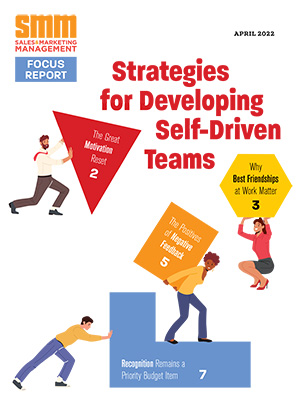The backdrop for marketing leaders going into 2025 is a landscape of flux.
The changes that we have seen over the last few years have been nothing short of seismic, opening big questions marketing leaders can no longer ignore.
Let’s reflect on a few of those shifts.
There has, rightly, been demand for the CMO to become increasingly accountable for revenue, both direct and indirect. This is coupled with the ongoing challenge of ever-expanding size and complexity of buyer groups and decisioning; the increasing importance of technology’s role in defining, designing and delivering marketing; and the expectation of improved operational efficiencies and effectiveness as a result. Customers expect hyper-personalized, real-time experiences by default – and that requires data. Robust, reliable data that is both accessible and usable.
It’s no wonder marketing leaders can feel daunted at times. However, as we move further into 2025, now really is the time to accept the big questions and act on them.
So, what are the big questions as we see them?
1. How can I secure additional investment?
Let’s start with the big one: economic uncertainty is continuing to tighten budgets, and, as we know, marketing is often one of the first functions to feel the squeeze (and of course, CMOs are expected to drive growth regardless).
So, how do we secure more investment when the dual pressure on budgets and performance isn’t letting up?
Securing investment today is about evidence. And for CMOs, that means one thing: Attribution. Without clear proof of how marketing contributes to sales outcomes and business growth, securing resources becomes significantly harder.
Evidenced attribution has long been seen as the holy grail for marketers – the ability to provide imperial evidence on the impact of each and every marketing activity, or combination of activities. But now it’s time to stop wishing for it as a future state and make it today’s reality.
The key is to clearly connect every initiative to a measurable business outcome. By ensuring robust integration between the technologies in play and being forensic in our approach to data capture, we can now make this a reality.
One of the main barriers has been complexity. There is danger in trying to include every small activity, rather than focusing on creating a model that covers the majority and building knowledge and assurance from there. The outcome of a “majority rule” approach is that we can make a start: capture learnings and build confidence (from our own teams and the business) in our ability to predict return of any marketing investment. It might not be 100% right every time, but we must start.
2. Can I really rely on my marketing data?
There are inherent data challenges in every marketing organization – and in every business. But 2025 is the time we must tackle these challenges head on and ensure we leave the year with our marketing data in better health.
There are two big reasons for this statement. Firstly, data underpins everything in today’s high-performing marketing function – segmentation, audience targeting, delivering an increasingly relevant customer experience and reporting.
Secondly, AI. While in many organizations, AI still sits with the developer team, it is getting closer to delivering real value to marketers – and we cannot even start to harness the potential if we don’t have good data.
Yet, too often, we are stuck with fragmented, outdated or incomplete datasets. We are working off data that is only a subset of wider customer data – and in a world where customers expect timely and relevant interactions, a single, joined up view with clean and reliable data is essential.
The key is to stop aiming for perfection and start focusing on what is a “must-have.” Let’s ask ourselves:
- What data do we really need to achieve our goals?
- Are we collecting and maintaining that data effectively?
- How can we enrich our first-party data with third-party insights to close the gaps?
Without this focus now, our ability to progress and continue to deliver evidenced value will get harder and harder.
3. How should I be looking to AI to drive marketing results – and where do I start?
AI is no longer on the horizon; It’s here. But let’s not pretend we have all the answers yet. Even the most advanced early adopters are still in the early stages, running pilots in isolated functions. For marketing leaders, the question is no longer whether to embrace AI, but how to approach it strategically.
It’s about starting small – learning and evolving.
By reviewing existing business processes – the flows that move information and insights through our team and connect to others, we can identify specific use cases where there is potential for improvement in either efficiency or effectiveness – predictive analytics, content personalization, or automated decision making are ideal testing grounds – and make a start.
Critical is the approach taken. We must treat these pilots as true experiments: define a clear hypothesis, allocate dedicated resources, engage with colleagues in data and IT to help shape our own teams thinking, and measure the results rigorously. Not all use cases will be successful, but that is the point. We need to make sure learnings are captured and fed into subsequent experiments.
Once we start to build confidence and comfort in the process within the team, learning will increase. Sharing those learnings with colleagues is critical, as AI is an all-enterprise play with no single team having all the answers.
4. Do I have the right team and operating model in place to deliver – now and in the future?
The marketing team we had two years ago may not be the one we need today. And it’s unlikely to be the one that will be needed tomorrow. As the CMO remit evolves, so too must the talent strategy and operating model.
This isn’t just about hiring, it’s about rethinking how the team is structured and where we’re investing resources.
Many organizations are insourcing creative and content functions, finding value in having those capabilities closer to the business. But this creates its own challenges:
Are we making the right trade-offs between creativity and operational efficiencies?
Are there other functions we could outsource to balance the workload?
What new skills are we going to need in future to capitalize on opportunities like AI or advanced data analytics – and how will we fund these new roles?
Building the marketing organization of the future requires a mix of pragmatism and vision. It requires clarity of purpose and an understanding of the level of change required to get from current to future model.
This starts by assessing our own team – where are the current skills, and where are the ambitions to learn and develop new skills? It’s often in our own teams that we can find the best way to link capabilities with strategic priorities.
5. If growth is our goal, what’s our strategy?
Growth doesn’t look the same for every organization, and that’s precisely the point.
The key won’t lie in simply choosing a growth strategy but in ensuring that we have the right infrastructure and processes in place and directly aligned to that strategy to execute on it effectively.
For example, those organizations focused on major accounts are likely to find an account-based marketing (ABM) approach likely to deliver the greatest returns, but success will demand more than just an alignment with sales teams. It will require shared planning, supported by insights and engagement tracking across the pipeline.
If growth is seen in scaling through volume market expansion, an entirely different marketing engine will be required. One with an emphasis on automation and efficiency, with robust CRM integration to drive prospects down the funnel with minimal friction.
The takeaway here is simple, but essential: Growth strategies are not interchangeable.
However we approach it, growth in 2025 is going to start with identifying and understanding where the biggest opportunities lie and building the strategy and the infrastructure to match.
The Landscape Ahead
As far as predictions for this year go, we’re going to see the marketing landscape become less rigid, with more fluid, adaptable tech stacks replacing traditional sequential platforms. Agile working and OKRs are seeing a resurgence too, pushing organizations towards greater flexibility and focus. And AI, though still evolving, is going to see its role in decision making grow, demanding robust and rock-solid data foundations.
Ultimately, 2025 is going to be a pivotal year for CMOs and for business as a whole. The opportunities are vast, but so are the challenges.
And while the road ahead is going to be complex, the direction is clear. Those who embrace this moment – who tackle these challenges with clarity, courage and conviction – will not only drive growth but redefine marketing excellence and what can be achieved by high-performing teams.





